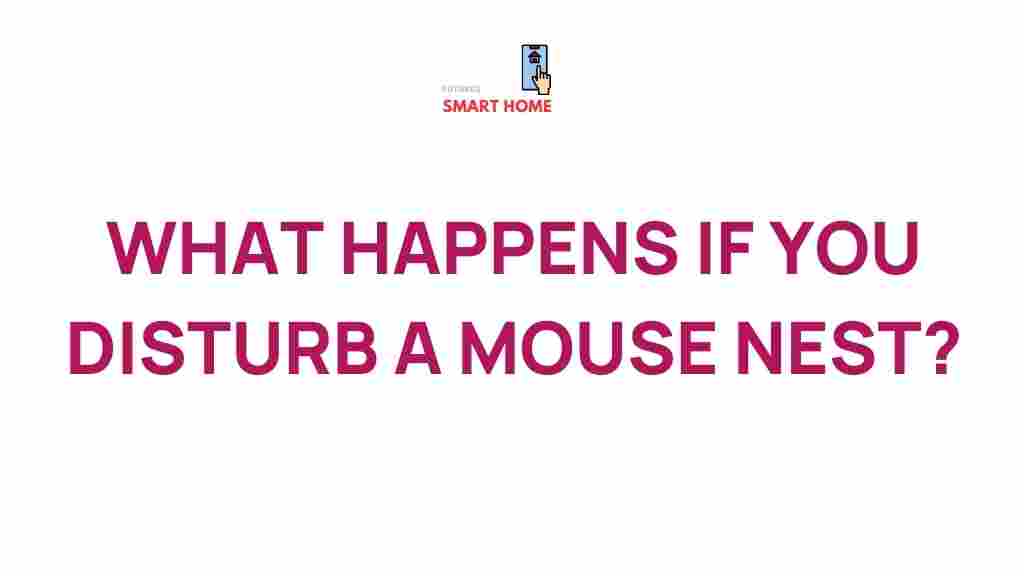Uncovering the Secrets of Disturbing a Mouse Nest
When it comes to wildlife, few creatures evoke as strong a reaction as rodents, particularly mice. These small mammals are often found in close proximity to human habitats, leading to a range of interactions—some pleasant, others decidedly not. One of the most critical aspects of understanding mouse behavior is recognizing what happens when a mouse nest is disturbed and the potential consequences that follow. This article will explore the impact of disturbing a mouse nest, the habitat of these creatures, and what you can do to manage any disturbances effectively.
Understanding Mouse Nests
Mice build nests for shelter, breeding, and raising their young. A mouse nest is typically constructed from materials such as:
- Grass
- Leaves
- Paper
- Fabric
- Insulation
These nests can be found in various locations, including:
- Inside walls
- In attics
- Underneath furniture
- In basements
The Disturbance of a Mouse Nest
Disturbing a mouse nest can occur inadvertently or intentionally. Here are some common scenarios:
- Cleaning out storage areas
- Renovating a home
- Removing debris from yards
When a nest is disturbed, the immediate reaction of the mice can vary based on several factors, including the time of year, the presence of young, and the level of disturbance.
Immediate Reactions to Disturbance
The disturbance of a mouse nest can lead to several immediate reactions:
- Flight Response: Mice may flee the area to seek safety, which can lead to them entering human living spaces.
- Defensive Behavior: If cornered, mice may display aggressive behavior to protect their young.
- Relocation: The mother mouse may attempt to relocate her young to a safer area.
Consequences of Disturbing a Mouse Nest
Understanding the consequences of disturbing a mouse nest is crucial for anyone who encounters one. Here are some potential impacts:
1. Health Risks
Rodents are known carriers of various diseases that can affect humans. Disturbing a nest can increase the likelihood of exposure to:
- Hantavirus
- Salmonella
- Leptospirosis
2. Property Damage
Mice are notorious for chewing through materials, which can lead to significant property damage. Common issues include:
- Gnawed electrical wiring
- Damaged insulation
- Contaminated food supplies
3. Behavioral Changes in Mice
When their nests are disturbed, mice can become more active and bold in their search for new habitation. This can lead to:
- Increased sightings within human habitats
- More aggressive scavenging behaviors
Impact on Local Wildlife
Disturbing a mouse nest does not only affect the mice themselves. It can have broader consequences for local wildlife, including:
- Predator-Prey Dynamics: Disturbed mice may become more vulnerable to predators, disrupting the local ecosystem.
- Competition for Resources: Other wildlife species may move in to take advantage of the disturbance, leading to competition for food and shelter.
Managing Mouse Nest Disturbance
If you find yourself in a situation where a mouse nest has been disturbed, here are some steps you can take to manage the situation:
1. Assess the Situation
Before taking any action, observe the area to determine:
- If there are any visible mice.
- If the nest contains young mice.
- How extensive the disturbance is.
2. Leave the Area Alone
If possible, avoid further disturbance. Allow the mice time to regroup and assess their situation. This is particularly important if there are young present.
3. Create a Safe Space
If you are concerned about the mice’s safety, consider creating a safe space for them by:
- Providing shelter (e.g., a box with nesting materials).
- Ensuring that the area is quiet and undisturbed.
4. Consult Wildlife Experts
If the disturbance has caused significant issues or if you are unsure about how to handle the situation, it is advisable to consult with wildlife experts or pest control professionals. They can provide guidance tailored to your specific circumstances.
Troubleshooting Tips
Here are some troubleshooting tips for dealing with mouse nest disturbance:
1. Monitor for Activity
Keep an eye on the area to see if mice return. Signs of activity include:
- New droppings
- Chewed materials
- Visible nesting materials
2. Prevent Future Disturbances
To minimize the chance of disturbing mouse nests in the future, consider the following preventative measures:
- Regularly clean storage areas to avoid buildup of debris.
- Seal potential nesting sites in your home.
- Educate yourself about local wildlife and their habitats.
3. Use Repellents Wisely
If you want to deter mice without causing harm, consider using natural repellents, such as:
- Peppermint oil
- Ultrasonic repellents
However, be cautious and ethical in your approach to wildlife management.
Conclusion
Disturbing a mouse nest can lead to a variety of consequences that impact both the mice and the surrounding ecosystem. Understanding the nature of these disturbances and taking appropriate measures is essential for maintaining a harmonious relationship with local wildlife. By being informed and proactive, you can minimize the impact of disturbances on mouse populations and the broader habitat they occupy.
For further information on managing rodents and understanding their role in the ecosystem, consider visiting this resource or checking out more tips on wildlife management here.
This article is in the category News and created by FutureSmarthome Team
